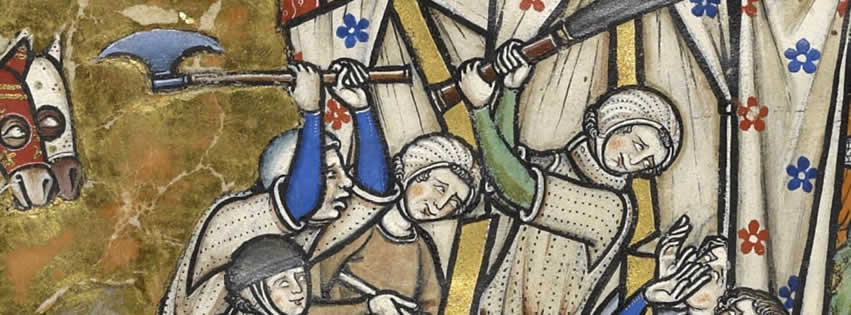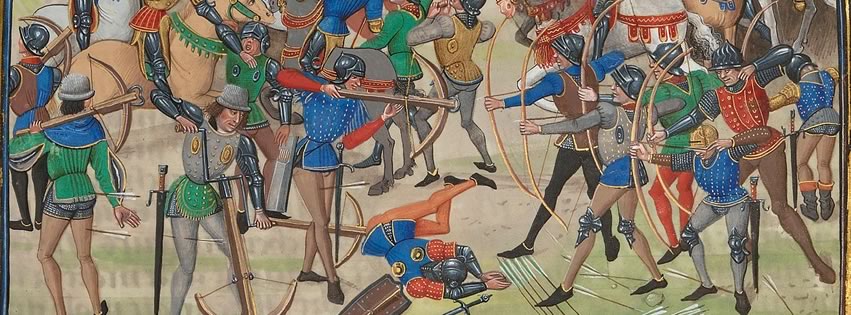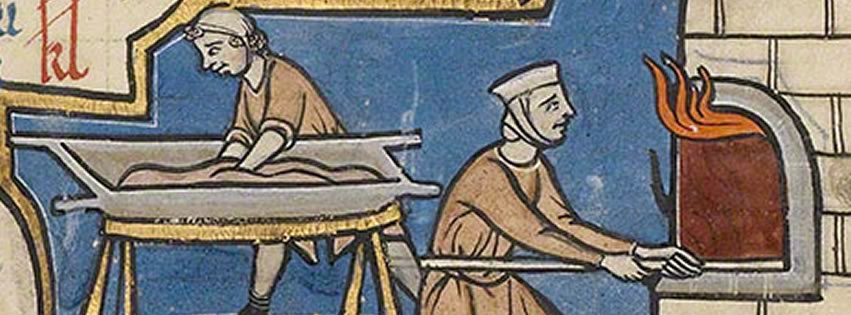Medieval Stuff to do in Kent

Kent’s history in the Medieval period is a rich, quirky and individualistic one. It’s been the scene of rebellions led by Jack Cade and Wat Tyler and where the Norman invaders found themselves so unwelcome they headed for the capital rather than subdue the locals (apocryphally). It’s also the place where Saxon England met Christianity, when St Augustine landed at Ebbsfleet in 597 and the City of Canterbury remains the seat of the Anglican faith to this day. As the gateway to the Continent Kent produced many fine castles and houses, both as defensive measures and displays of wealth and power, set in the beautiful landscape of the Garden of England.
The upshot of which is that it’s almost impossible to miss the Medieval heritage around the county, so if you’ve an interest in the period there’s plenty to see and do!
Stuff to see

Canterbury Cathedral
Let’s start with one of the most important historical and religious sites in the country. Founded 600AD, Canterbury Cathedral was the site of the murder of Thomas Becket, the Archbishop, after an outburst from King Henry II was misinterpreted by over-eager knights. An active church to this day, the stunning Gothic architecture remains a thing of beauty thanks to the team of conservators including stonemasons and stained glass experts working on its upkeep. The tomb of Edward, The Black Prince, is also to be found here, along with his surcoat, shield, helmet and gauntlets.
Rochester Castle
Rochester Castle was built in 1127 as a defensive fortress against invasion of the River Medway. It’s suffered partial demolition in conflicts and rebuilding by subsequent kings but its position on the London Road made it an important fortification for 400 years. The castle is managed by Medway Council but English Heritage members get in free.
Rochester Cathedral
The original church was founded in 604AD and has been the heart of Rochester ever since, with beautiful architecture. The crypt has undergone a restoration lasting 3 years and now houses an exhibition displaying the Textus Roffensis, the only copy of the first English Code of Law, dating from the 1120s.
Tonbridge Castle
A fine example of a motte and bailey castle (hill with ditch around it), the current stone keep was built in the 13th century and added to by subsequent residents over the next 200 years. Now, after a period of refurbishment, you can take an audio tour of the castle and get a sense of what life was like 700 years ago. For the athletically inclined, The Tudor Trail starts here, taking cyclists all the way to Penshurst Place.
Hever Castle
Famed as the childhood home of Anne Boleyn, Hever Castle packs 700 years of history into a castle that looks the part, with crenelations, a moat and 125 acres of grounds. Whether you explore the house, owned by 13 families since it’s construction, or get lost in the beautiful gardens, maybe following the stream the Anne Boleyn’s Walk, Hever has a lot to offer for a day out. Summer sees archery and jousting in the grounds and you never know, you might spot the ghost…
Leeds Castle
Tagging itself as “The Loveliest Castle in the World” it’s hard to argue that Leeds Castle isn’t at least a contender. What started as a Norman stronghold has seen some of the most powerful figures in the country as residents, including 6 medieval queens, Henry VIII and Katherine of Aragon. Extensive renovations in the early 18th century have resulted in the castle regaining its former glory, set in a lake, rather than a mere moat and surrounded by 500 acres of gardens and parkland.
The castle houses an extensive exhibition of its own history and the unique Museum of Dog Collars, while the grounds are a combination of formal gardens and parks. The latter house attractions including a falconry centre, Segway tours and adventure playgrounds. Seasonal events at Leeds Castle include Jousting, Motors By The Moat (classic cars) and Christmas Fairs – there is a huge amount for the whole family to see and do.
Dover Castle
Dover Castle stands over the White Cliffs and is positively iconic as the classic image of an English castle. The excellent positioning has been logistically and strategically important since the Romans built a lighthouse on the site which still stands. Explore the castle proper, with periodic reconstructions of life in the court of King Henry II then descend to the medieval tunnels housing the seaward defences.
More modern history can be found in the Underground Hospital, Operation Dynamo Exhibition and The Bunker; Dover has played a part in many historical events since its construction and they are all well worth learning about. Free entry to English Heritage members.
Margate Tudor House
Visitors can enjoy guided tours of this architecturally unique “transitional house”, forming the missing link between open hall and early modern styles. Dating from 1525 the house has seen several uses, including being subdivided into workers’ cottages in the 19th Century and slated for demolition in the 1930s until saved by a local builder. Now the house has been restored and the garden features box hedge squares and climbing plants in its Tudor Knot garden.
Stuff to do

Medieval Combat
Historic European Martial Arts (HEMA) teaches authentic combat techniques based on historical manuscripts from England and Continental Europe. KDF Broadstairs is the only school in East Kent teaching under the heading of the “Kunst des Fechtens” (Art of Fighting) group, one of the organising bodies with several schools under their banner specialising in German long sword in the style of Johannes Liechtenauer. Both the Broadstairs school and the Canterbury Medieval Combat Group teach the German style of unarmoured combat and there is plenty of material in the manuscripts to allow the teaching of other weaponry of the era.
At the moment both groups have an open door policy so connect with them over Facebook if you’re interested in coming along to a session. Because of the nature of the training these classes can only accept over 18s.
Medieval Re-enactment
If you really want to immerse yourself in history, re-enactment is a fun and educational hobby.
The Medieval Siege Society was founded to educate and interest the public in the periods of The Hundred Years War and the War of the Roses. Numbering a membership of hundreds with crafters, combatants and living history enthusiasts the MSS appear at events across the country and have worked with the BBC and ITV. They have a day membership if you just want to see what it’s all about or a full membership with an annual subscription. Families are welcome, and some of their members are 3rd generation re-enactors!
Members are distributed across several “households”, so get in touch to find your nearest group. One of these is The Free Men of Blean, based near Canterbury, who became part of the Medieval Siege Society in 2018, specialising in combat and archery with a living history camp.
Quex Park
Quex Park in Birchington hosts several crafters and medieval attractions, as well as a selection of great cafes. Highlights to see and do include:
Archery

Nick Toy makes classic medieval longbows in his workshop at the Craft Village and runs Have a Go sessions in season for ages 7- adult. His emphasis is on rediscovering traditional shooting skills and producing historically accurate bows.
https://www.facebook.com/NTClassicBows/
Falconry South East
A traditionally noble pursuit, Falconry South East let you get up close and personal with their birds of prey in a safe, fully insured environment. Book a 2 hour session to fly hawks and falcons or try one of their Owl or Hawk Walks in the grounds of Quex Park.
https://www.facebook.com/falconry.southeast.Kent/
Blacksmithing
The Bearded Pig Forge at Quex sells hand-made knives and runs courses. You can learn traditional blacksmithing skills and knife-making in the spacious workshop over one or 2 days. All protective gear is provided and you can take your masterpiece home with you. https://www.facebook.com/Beardedpigforge/
Sandwich Medieval Trust

Preserving and educating people about the medieval history of the Sandwich area is the focus of this registered charity, based out of the Sandwich Medieval Centre on the quay. The visitor’s centre provides an overview of the way of life of the town in the medieval era, and visitors can watch and learn about the crafts of the era, including the building of a cross-section of a Cog, to show the techniques used in the boat’s construction.
The Trust runs half and full day workshops where you can get hands on with medieval crafts, details can be found on their website and some age restrictions may apply.
Blacksmithing
Learn blacksmithing at the forge and craft yourself a reminder of your experience. All the nails used in building the Cog are being made in this working forge.
Medieval Bread Making
Get to grips with the bread-making techniques of the rich and the poor, working with stone ground flour, honey and beer-harvested yeast and rye, barley, pea and bean flour for unleavened loaves.
Medieval Calligraphy and Illumination

Learn to write in the gothic script of medieval manuscripts with a pen (or quill!) and ink to produce a piece to take home. Or learn how to illuminate manuscripts, producing one of the ornate capitals used in the era, from outlining to colouring. All materials are provided and these courses are suitable for beginners.